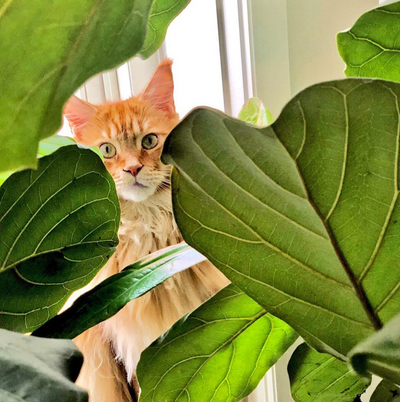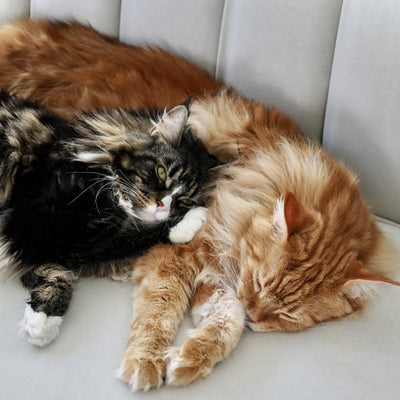Dr. Lang is the Chief Medical Officer at Heart of Chelsea Veterinary Group. She lends her years of expertise to help Nacho carefully craft one-of-a-kind meal experiences that meet the unique health needs of cats.
Here, she’s helping us tackle that tricky thing our cats often have trouble with – hydration.
----
As a veterinarian, I often get asked for tips on how to keep cats hydrated. We all know that cats can be a bit stubborn at times, especially when it comes to drinking water throughout the day.
Thankfully, there are many ways to lead our lazy feline drinkers to water. As Nacho’s trusted veterinary advisor, we’ve spent lots of time thinking of the best ways to keep his fellow felines hydrated; from water fountains to kitchen glasses to Nacho’s go-to ingredient, bone broth, we’ve got you covered.
Why Cats Get Dehydrated
House cats as we know them today descended from wildcats, who lived in the desert, and have a decreased thirst drive by nature. This lack of drive to drink water causes otherwise healthy cats to live chronically dehydrated. Because cats aren’t particularly thirsty, they don’t have much of an urge to drink, even if they are dealing with mild dehydration.
Dehydration can also be heightened by a number of illnesses, such as kidney disease, diabetes, and gastrointestinal losses through vomiting and diarrhea. In addition, because you can’t always take the jungle mentality out of the cat, cats have the ability to concentrate their urine to survive on smaller quantities of water, which can lead to urinary problems. Have no fear, though, us vets are constantly on the lookout for signs!
When I see cats for visits, I’m always checking for dehydration. Cats that are less than 5% dehydrated won’t be noticeable on a physical exam, but once they’re more than 5% dehydrated, I’ll often feel for dry gums, decreased skin elasticity, and sunken eyes. For a quick at-home test, pinch your cat’s skin and gently pull upward. You’ll want to see their skin return to its normal position quickly and, if it doesn’t, they’re likely experiencing some dehydration. As always, be sure to consult your veterinarian if you aren’t sure and need some advice! We’re here to help.
Tips to Keep Your Cat Hydrated
We’ve all heard the saying about leading a horse to water, right? Well in this scenario, the horse is your cat and we’re going to ensure they get all the moisture they need!
- Wet cat food is always a great addition to a cat’s diet. Luckily, bone broth is Nacho’s signature ingredient that sneakily encourages cats to take in additional fluids while they’re eating. If your cat tends to go for dry cat food instead, try mixing in a bit of bone broth for extra hydration.
- Many cats prefer to drink from running water (similar to their ancestors who only drank from moving water in the wild). Because putting a stream in your home isn’t always the easiest, I recommend providing your cat with a running water fountain! The movement makes the water easy to see and helps keep the fresh, cold taste.
- Some cats may like a bowl (or glass) of water instead of a fountain – totally fine! Add a few drops of bone broth to the water for flavor to encourage your cat to be excited to hydrate.
Why Hydration Matters
As a general rule of well-being, we want to avoid dehydration in our kitties as much as possible. Many of the clinical illnesses I see everyday, such as bladder inflammation and constipation could be lessened with proper hydration, so it’s critical to keep your feline friends hydrated.
As for intake, the amount of water your cat needs to drink depends on their size, activity, and health, but typically a 10 pound cat should drink approximately 1 cup of water per day, including the water that’s in their diet.
Monitoring your cat’s water intake can be tricky, but it’s often helpful to refill their water dish each day so you can have a visual of how much they’ve drank that day.
----
It may take a little while to determine which method(s) your cat prefers for their hydration. After testing a few options, we know that if Nacho isn’t digging into a bowl of his favorite wet chicken recipe for bone broth hydration, he’s sneaking sips out of someone’s water glass. No matter the method, the important thing is that you’re encouraging them to drink as frequently as possible!
Thanks so much to Dr. Katja for your helpful thoughts on hydration for cats! Follow @doctorkibble on Instagram and stay tuned for more tips.









